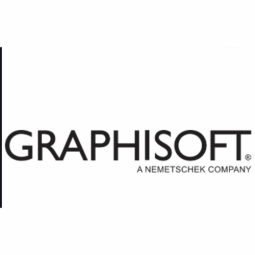Applicable Industries
- Consumer Goods
- Retail
Applicable Functions
- Procurement
- Product Research & Development
Use Cases
- Retail Store Automation
- Theft Detection
Services
- Hardware Design & Engineering Services
- Testing & Certification
About The Customer
kommadesign is a forward-thinking company based in Viborg, Denmark, that specializes in the retail industry. With over 15 years of experience, the company offers a range of services including retail solutions, product design, conference design, and trade fair design. The company has built a strong reputation and has worked with several international brands such as adidas, Timberland, Menu, Sony, egetæpper, and vifa Denmark. Despite being a young company, kommadesign has demonstrated its ability to deliver innovative solutions and maintain a high level of quality control in its processes.
The Challenge
kommadesign, a young and visionary company based in Viborg, Denmark, specializes in providing retail solutions, product design, conference design, and trade fair design. With over 15 years of experience, the company has worked with international brands such as adidas, Timberland, Menu, Sony, egetæpper, and vifa Denmark. However, operating in a highly competitive business environment, kommadesign faced the challenge of maintaining quality control over their processes and effectively utilizing their resources. The company needed to offer their national and international customers the best solutions and highest quality at the right price. To achieve this, they developed a four-phase model for their assignments, which required a tool that could facilitate the process from idea generation to implementation.
The Solution
kommadesign adopted Building Information Modeling (BIM) technology, specifically Archicad, to streamline their workflow and enhance their productivity. The company found Archicad to be extremely intuitive and simple to work with, offering nearly all the functions and features they needed to deliver the best solutions for their clients. The software was particularly beneficial in the third phase of their model, idea development, where it was used to develop sketches, 3D models, and prototypes. By using BIM at the sketch level, kommadesign was able to save resources in the final phase, implementation. Furthermore, Archicad's intelligent objects feature reduced after-work and facilitated the incorporation of last-minute changes and economic calculations. The software also provided a unique opportunity to include clients as co-producers of the solutions kommadesign develops.
Operational Impact
Quantitative Benefit

Case Study missing?
Start adding your own!
Register with your work email and create a new case study profile for your business.
Related Case Studies.
.png)
Case Study
Improving Vending Machine Profitability with the Internet of Things (IoT)
The vending industry is undergoing a sea change, taking advantage of new technologies to go beyond just delivering snacks to creating a new retail location. Intelligent vending machines can be found in many public locations as well as company facilities, selling different types of goods and services, including even computer accessories, gold bars, tickets, and office supplies. With increasing sophistication, they may also provide time- and location-based data pertaining to sales, inventory, and customer preferences. But at the end of the day, vending machine operators know greater profitability is driven by higher sales and lower operating costs.

Case Study
Improving Production Line Efficiency with Ethernet Micro RTU Controller
Moxa was asked to provide a connectivity solution for one of the world's leading cosmetics companies. This multinational corporation, with retail presence in 130 countries, 23 global braches, and over 66,000 employees, sought to improve the efficiency of their production process by migrating from manual monitoring to an automatic productivity monitoring system. The production line was being monitored by ABB Real-TPI, a factory information system that offers data collection and analysis to improve plant efficiency. Due to software limitations, the customer needed an OPC server and a corresponding I/O solution to collect data from additional sensor devices for the Real-TPI system. The goal is to enable the factory information system to more thoroughly collect data from every corner of the production line. This will improve its ability to measure Overall Equipment Effectiveness (OEE) and translate into increased production efficiencies. System Requirements • Instant status updates while still consuming minimal bandwidth to relieve strain on limited factory networks • Interoperable with ABB Real-TPI • Small form factor appropriate for deployment where space is scarce • Remote software management and configuration to simplify operations

Case Study
Digital Retail Security Solutions
Sennco wanted to help its retail customers increase sales and profits by developing an innovative alarm system as opposed to conventional connected alarms that are permanently tethered to display products. These traditional security systems were cumbersome and intrusive to the customer shopping experience. Additionally, they provided no useful data or analytics.

Case Study
How Sirqul’s IoT Platform is Crafting Carrefour’s New In-Store Experiences
Carrefour Taiwan’s goal is to be completely digital by end of 2018. Out-dated manual methods for analysis and assumptions limited Carrefour’s ability to change the customer experience and were void of real-time decision-making capabilities. Rather than relying solely on sales data, assumptions, and disparate systems, Carrefour Taiwan’s CEO led an initiative to find a connected IoT solution that could give the team the ability to make real-time changes and more informed decisions. Prior to implementing, Carrefour struggled to address their conversion rates and did not have the proper insights into the customer decision-making process nor how to make an immediate impact without losing customer confidence.









